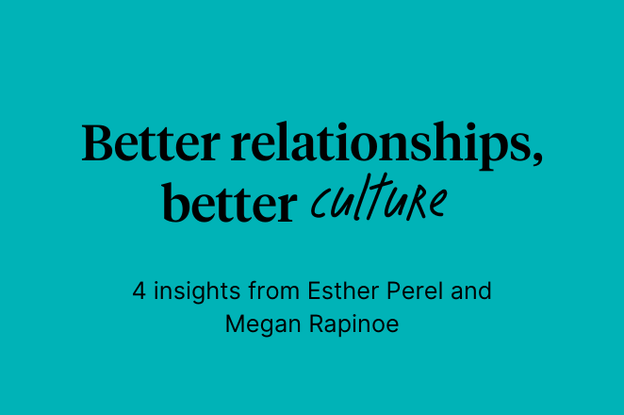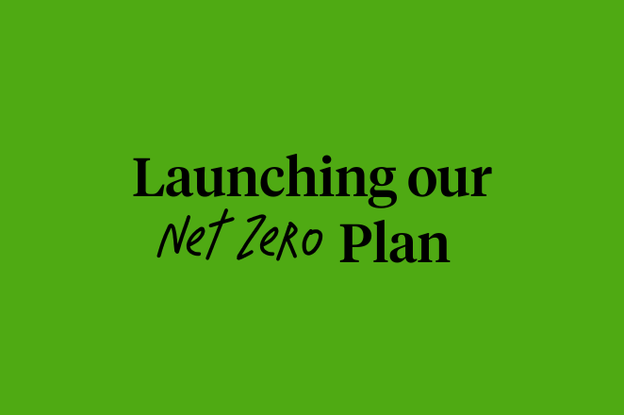Hindsight is 2020: 5 insights from Culture Amp’s COVID-19 survey
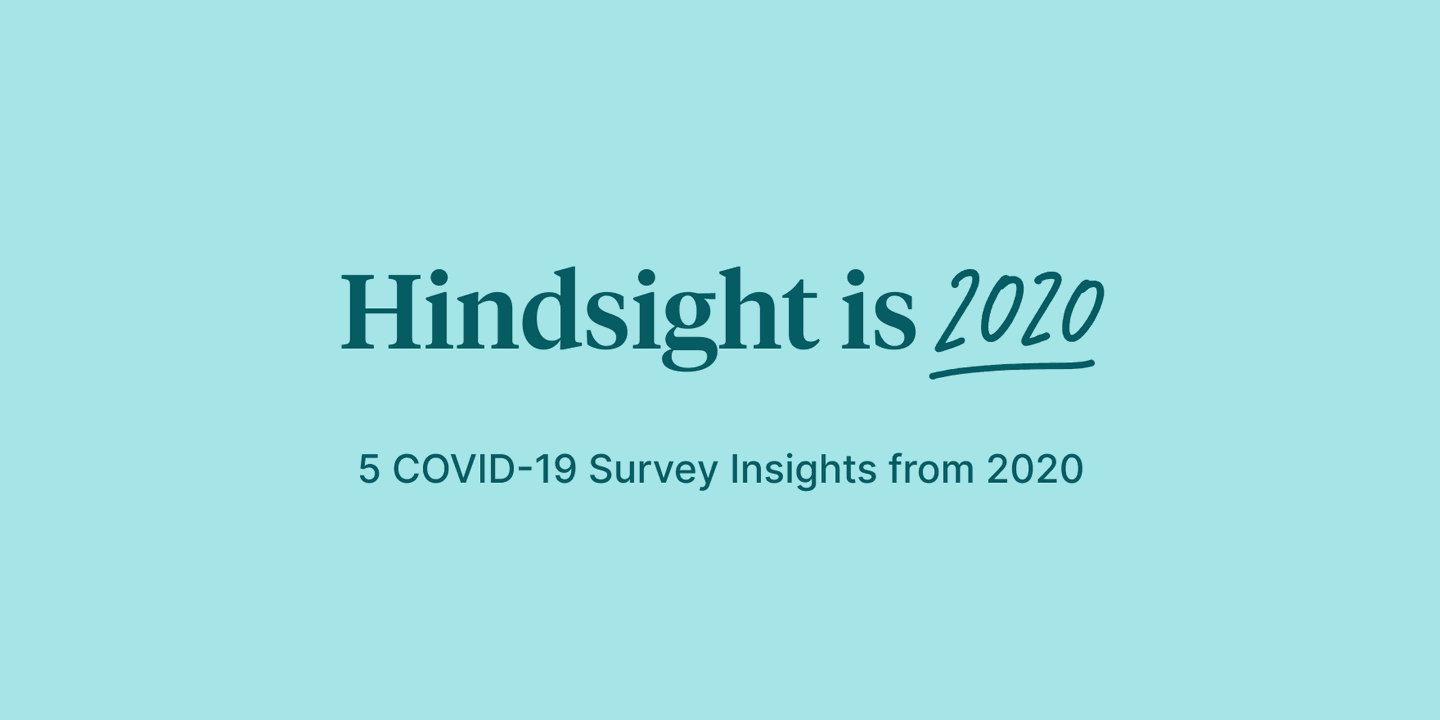
In 2020, Culture Amp pivoted to help our customers and broader community work through the pandemic. We created emergency response surveys for organizations to get timely feedback from their employees on what mattered at that moment, and made sure HR teams were finding time to take care of themselves. Now that we’re well into 2021, we can look back over the last year’s data with the knowledge we have today.
In 2020, over 5000 surveys were launched through the Culture Amp platform, giving us a wealth of data to see not only how COVID-19 impacted individuals at work, but also how companies responded, and the overall impact on workplaces around the world. In this article, we’ll share five key insights we found, along with our predictions for what this means for the future.
Hindsight 1: Leaders stepped up in a big way
Contrary to what you might expect, we actually saw a 4% increase in employee engagement during the height of the pandemic. While this may seem small, our engagement benchmarks have been incredibly stable over the last decade. So this uptick shows the resilience of employees during this time. When digging deeper, we found that leadership specifically saw the largest jumps in employee perception. A crisis is a make or break moment for leaders, and these results suggest many leaders rose to the challenge.

2021 Foresight: Leaders had to stretch their muscles and learn new behaviors during the pandemic, particularly when it came to communication and compassion. Those that maintain these new skills will be better positioned to navigate the new normal.
Hindsight 2: While COVID-19 brought flexibility, it didn’t bring work-life balance
Prior to 2020, less than 15% of companies we work with had a majority of employees working remotely, but during the pandemic, that number jumped to over 75%.

While employees have gained greater flexibility in how they worked, the concern that employees wouldn’t be able to switch off clearly stood out in our data. There were only 3 questions (out of over 60!) that declined during 2020, and one was “I am able to arrange time out from work when I need to.”
2021 Foresight: As companies convert to hybrid working models, they’ll need to switch their focus from enabling employees to get work done effectively remotely, to being able to set boundaries and truly switch off from work.
Hindsight 3: The awareness generated through Black Lives Matter didn’t improve workplace perceptions of diversity
Following the death of George Floyd in May 2020, there was a rightful swell of Black Lives Matter protests and workplace activism. As this activism extended into the workplace, it spurred more organizations to collect feedback on their diversity efforts, not only in the US but across the globe.
However, despite the increasing awareness of the importance of DEI and the general upward trend in employee sentiment, diversity was one of only two factors that decreased in favorability in 2020. This suggests that either employees’ expectations have increased, DEI actions haven’t yet had their intended impact, or more companies are asking questions performatively but not taking true actions that would lead to impact.

2021 Foresight: Asking the question is the first, courageous step. But don’t be surprised if the initial response is negative and prompts some difficult conversations, this is where real change will happen.
Hindsight 4: Increasing surveys can decrease participation
During 2020, companies on average ran double the surveys they did in the previous year to keep a pulse on how employees were doing. Unfortunately, we also saw a decrease in participation alongside the increase in surveying. But thankfully, this finding wasn’t universal. For example, healthcare organizations actually saw an increase in participation, despite increasing the number of surveys. It’s possible this is due to the dreaded lack of action fatigue - unlike companies in other industries, healthcare organizations didn’t have the luxury of not taking action on their results. Or it could simply be because employees had more on their plates (e.g., homeschooling children and taking care of sick loved ones) so taking a company survey fell low on their list of priorities.
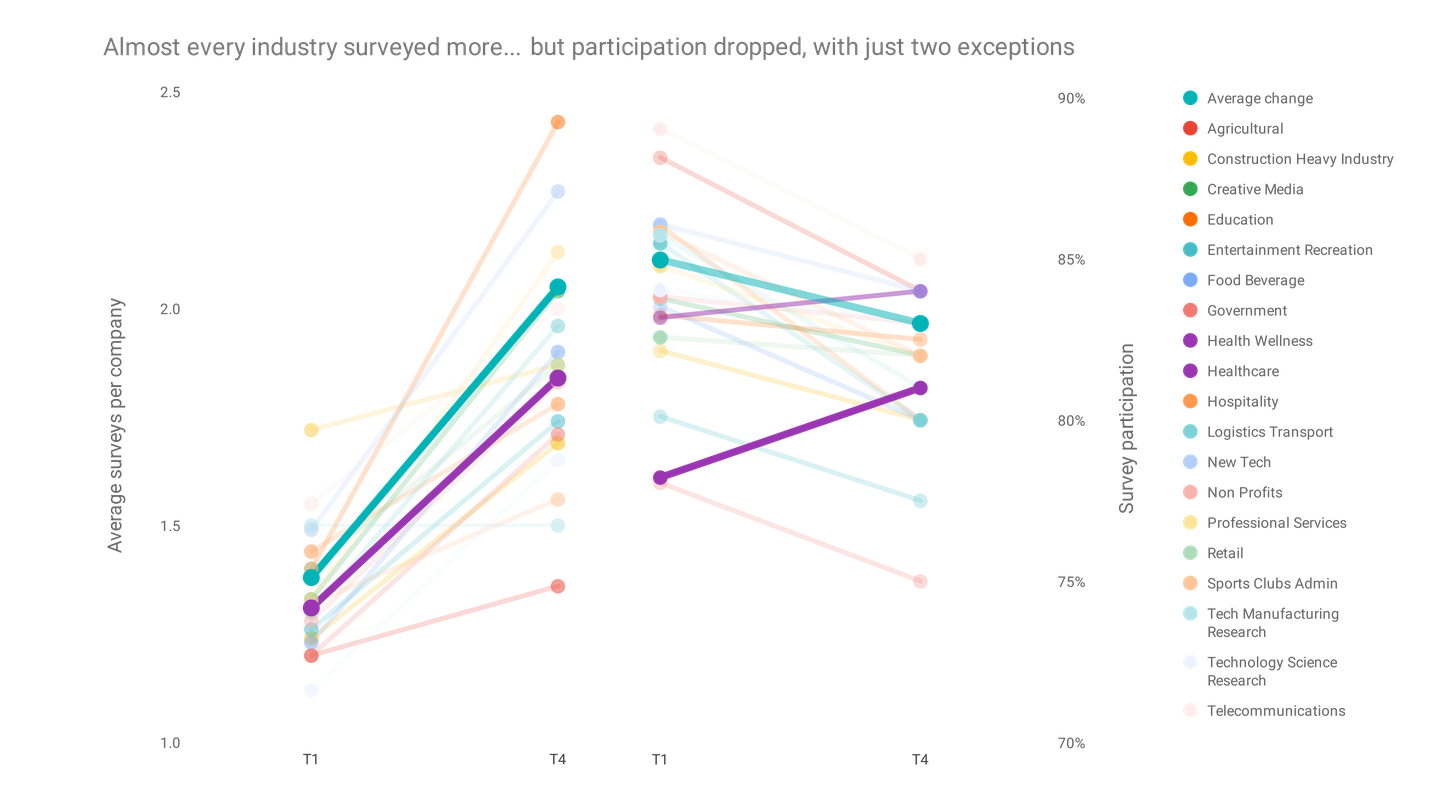
2021 Foresight: 2020 whet the appetite for companies to get more frequent feedback from their employees. Now, it’s important to improve the way companies communicate what will be done with the feedback, and take action.
Hindsight 5: HR bore the brunt of the emotional labor
In our recent survey of almost 5000 HR professionals, we’ve found that HR folks bore the brunt of not only dealing with the logistics of the pandemic (e.g., switching to distributed ways of working, office closures, etc.) but also its emotional toll (e.g., helping employees through their grief, laying people off). While the concept of emotional labor - the regulation of one’s own emotions as part of a professional role - in HR is not new, 2020 has been a reckoning and has shown how strong the impact of emotional labor can be.
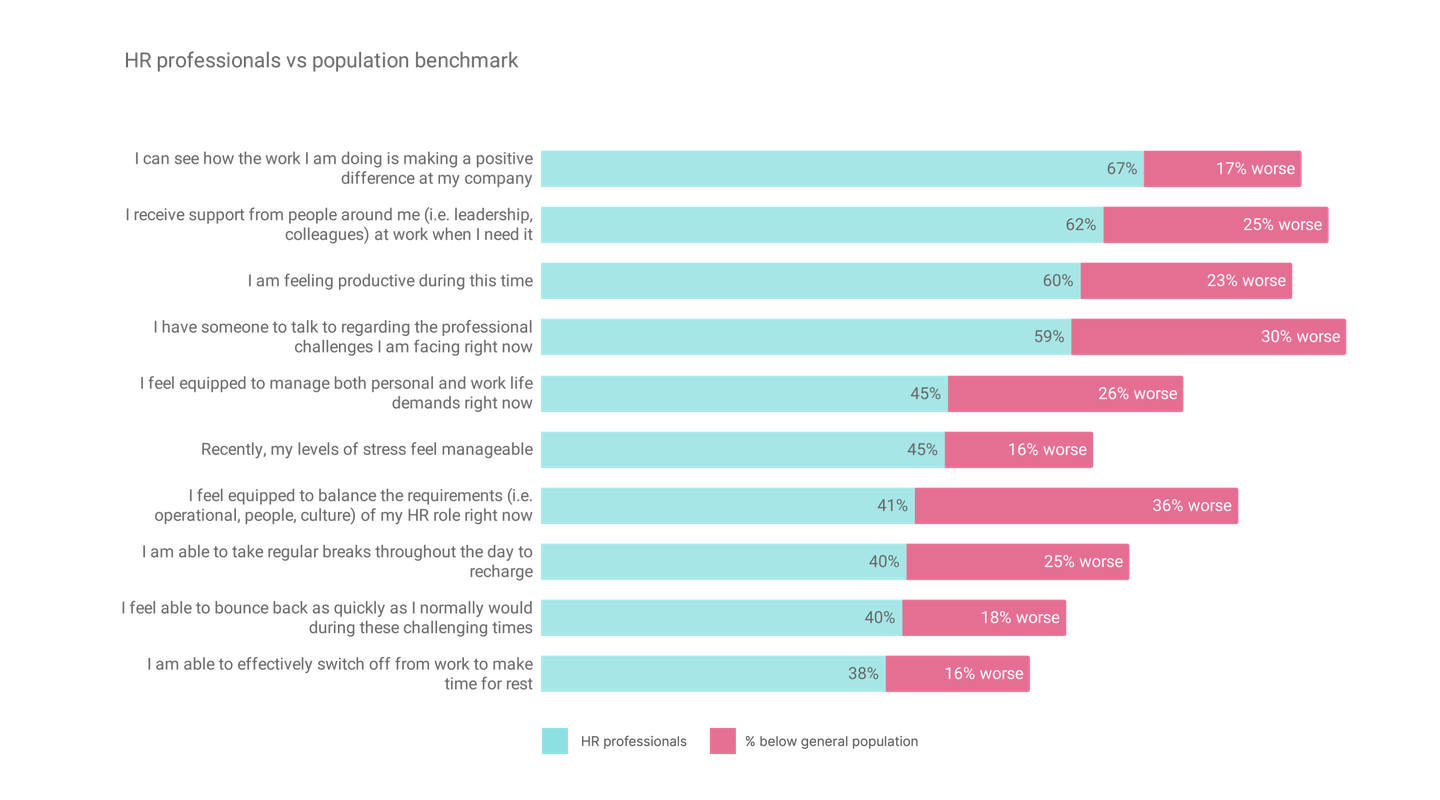
2021 Foresight: It’s no surprise that the emotional labor of just “grinning and bearing it” can lead to stress and burnout over time, and that HR folks cannot sustain the current pace forever. But there’s good news: many companies have been embedding beliefs in vulnerability and authenticity into their practices, which has been evidenced to help buffer the negative impact of emotional labor.
Bonus Foresight
The question on everyone’s mind seems to be “what’s going to happen to employee engagement?” As mentioned, engagement increased over 2020. Unsurprisingly, the largest increases were in our “Intent to stay” items. With businesses and the job market opening back up, some companies have been predicting that engagement is going to drop lower than ever due to the new bounty of opportunities. Yet others have predicted that the post-pandemic euphoria will transfer into the workplace and we’ll see record level engagement.
Early data is pointing to a more mundane story – while engagement has dropped from pandemic highs, it’s still higher than pre-pandemic. We predict that over 2021, we’ll see engagement levels return to its early 2020 baseline.

Data can only tell us so much about what the future will hold. But one thing is for sure, companies that recognize and prioritize each in for organizations to get timely feedback from their employees on what mattered at that moment, and our dedicated team of people scientists will be crunching the numbers, monitoring our predictions, and updating the community on key findings.

